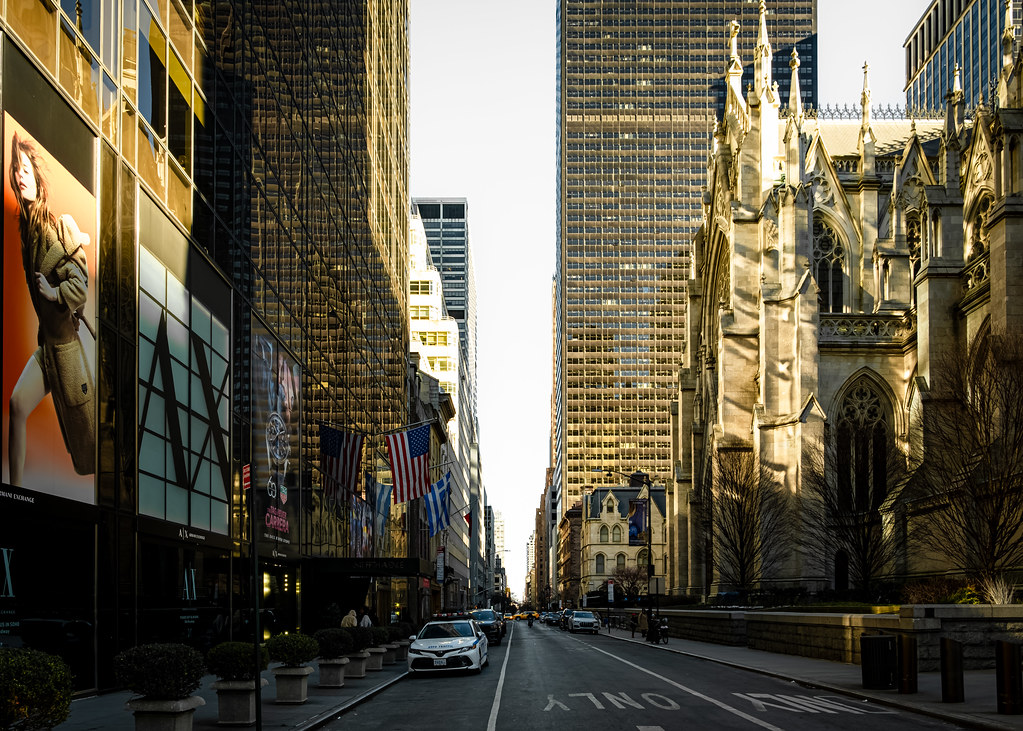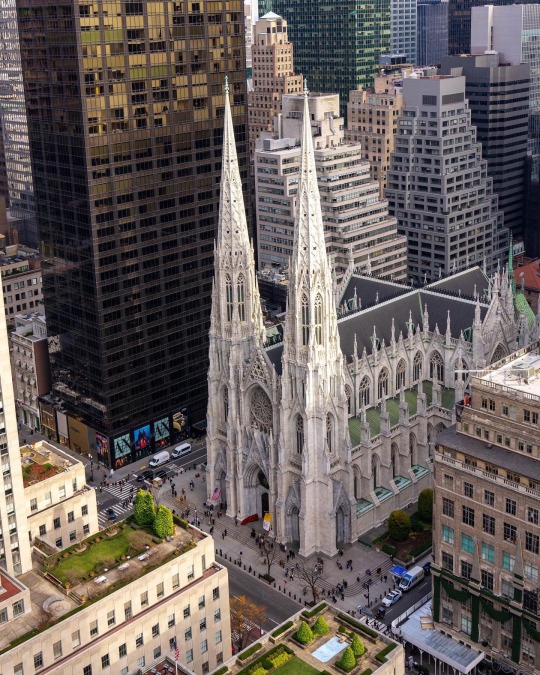#St. Patrick's Cathedral
Text
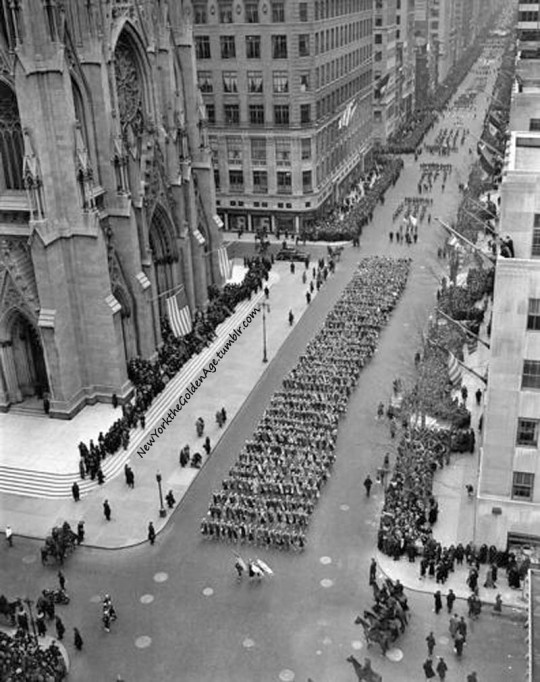
The 1939 St. Patrick's Day Parade had 75,000 marchers.
My queue got messed up. This was supposed to be posted today.
Photo: John Rooney for the AP via The World Link
#vintage New York#1930s#John Rooney#St Patrick's Day#St Patrick's Day Parade#parade#March 17#17 March#aerial view#St. Patrick's Cathedral#vintage St. Patrick's Day
64 notes
·
View notes
Photo

New York City 2016: St. Patrick’s Cathedral encore
72 notes
·
View notes
Text

St. Patrick's Cathedral,New York City
St. Patrick's Cathedral is a Catholic cathedral in the Midtown Manhattan neighborhood of New York City. It is the seat of the Archbishop of New York as well as a parish church. The cathedral occupies a city block bounded by Fifth Avenue, Madison Avenue, 50th Street, and 51st Street, directly across from Rockefeller Center. Designed by James Renwick Jr., it is the largest Gothic Revival Catholic cathedral in North America.
The cathedral was constructed starting in 1858 to accommodate the growing Archdiocese of New York and to replace St. Patrick's Old Cathedral. Work was halted in the early 1860s during the American Civil War; the cathedral was completed in 1878 and dedicated on May 25, 1879. The archbishop's house and rectory were added in the early 1880s, both designed by James Renwick Jr., and the spires were added in 1888. A Lady chapel designed by Charles T. Mathews was constructed from 1901 to 1906. The cathedral was consecrated on October 5, 1910, after all its debt had been paid off. Extensive restorations of the cathedral were conducted several times, including in the 1940s, 1970s, and 2010s.
More on Wikipedia
19 notes
·
View notes
Text

Alexandra Daddario
19 notes
·
View notes
Text


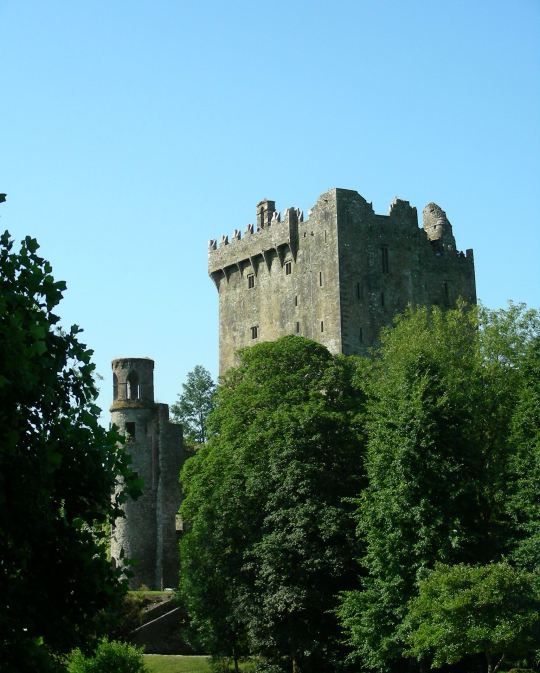



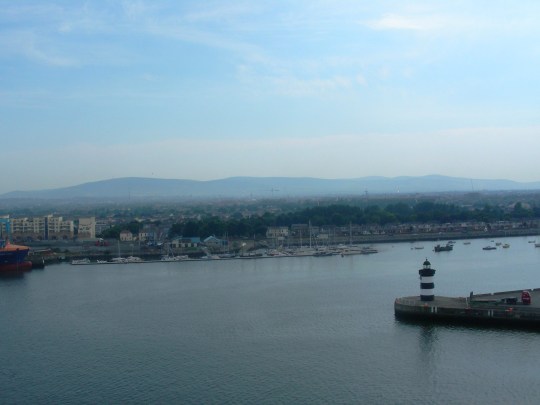

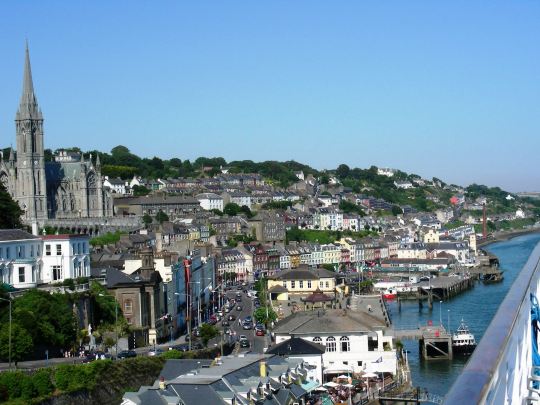
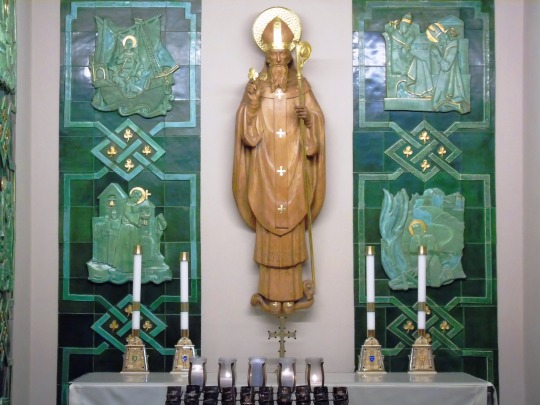






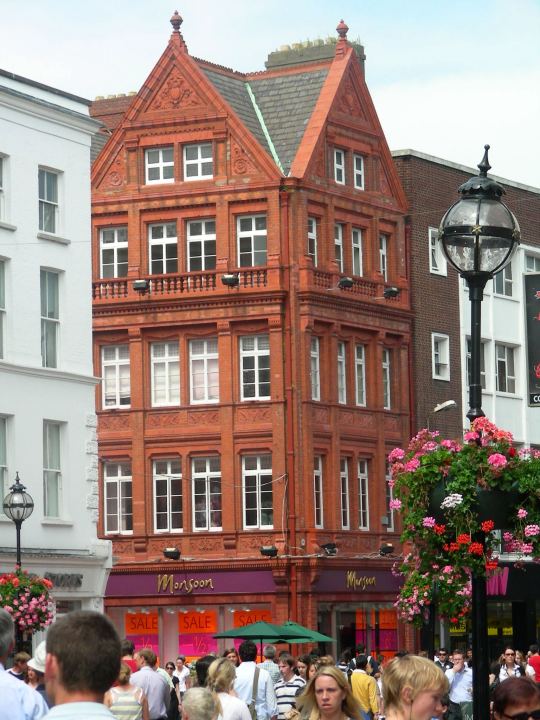


Saint Patrick’s Day
Saint Patrick’s Day is an annual feast celebrated on March 17th. Get ready to don yourself with the greenest garb, eat some clover-shaped cookies and march in Irish pride parades. St Patrick was the patron saint and bishop of Ireland. He was also the national apostle of Ireland who is credited with bringing the Christianity to Ireland. St Patrick’s Day is a religious feast day in the 17th-century which has evolved into a variety of festivals from across the globe. The celebration includes Irish culture with parades, special foods, music, dancing, and a whole lot of traditional green feast of the meal of Irish bacon and cabbage. St Patrick’s Day is also celebrated inside and outside of Ireland as a cultural and religious holiday. Saint Patrick’s Day is a global celebration of Irish culture and honors St Patrick, one of Ireland’s patron saints.
“Christ beside me, Christ before me, Christ behind me, Christ within me, Christ beneath me, Christ above me.” – Saint Patrick
History of Saint Patrick’s Day
The origin, history, and the first observance of Saint Patrick’s Day are as old as St Patrick. Therefore the exact person or organization who has come up celebrating the St Patrick is anonymous. However, the history and tradition of St Patrick’s Day celebration are rich and long. March 17th is chosen for the feast as it is the traditional death date of Saint Patrick in or around the year 493. St Patrick’s Day is otherwise called as or the Feast of Saint Patrick or Lá Fhéile Pádraig in Irish, meaning the Day of the Festival of Patrick. It is a cultural and religious celebration, and the Irish have observed this day as a religious holiday for beyond 1,000 years. St Patrick’s Day was made as an official Christian feast day during the early 17th century and is observed by the Catholic Church, the Anglican Communion, the Eastern Orthodox Church, and the Lutheran Church.
St Patrick’s Day commemorates Saint Patrick and the arrival of the Christianity in Ireland. The annual commemoration, in general, celebrates the rich heritage and culture of the Irish. People in Ireland have been celebrating the Roman Catholic feast day of St Patrick on March 17 around the ninth or tenth century. The first parade was held to honor St Patrick’s Day took place in the United States and not in Ireland. The celebration Day falls during the Christian season of Lent, and the Irish families would traditionally attend the church in the morning and celebrate it in the afternoon. People will drink, dance and feast on the traditional meal of Irish bacon and cabbage as the Lenten prohibitions against the consumption of meat were abandoned on the celebration.
Saint Patrick’s Day is still a public holiday in many countries including the Republic of Ireland and has also been celebrated in more countries than any other national festival. Until the late 20th century, the St Patrick’s Day was often a bigger celebration among the diaspora than it was in Ireland. Celebrations usually involve the public parades and festivals, Irish traditional music sessions, and the wearing of the green attire or shamrocks. The Irish brands of drinks are popular at the St Patrick’s Day events. The shamrock is considered to be the most common St Patrick’s Day symbol. The shamrock is traditionally the leaf of the clover plant that is referred to as a symbol of the Holy Trinity. People prefer to wear the color green and the St Patrick’s Day parades will hold the flag of the Republic of Ireland around the world.
The custom of ‘drowning the shamrock‘ or ‘wetting the shamrock‘ on the St Patrick’s Day was historically popular, especially in Ireland. A shamrock is then put into the bottom of a cup at the end of the celebrations and then the cup is filled with the alcohol like whiskey, beer, or cider. The alcohol is then drunk as a toast to St Patrick, Ireland, or those present. The shamrock will either be swallowed with the drink or taken out and tossed over the shoulder for the good luck. It was said that St Patrick had rid Ireland of snakes. However, there have been no snakes in Ireland. Saint Patrick was a 5th-century Romano-British Christian missionary and is considered to be the foremost patron saint of Ireland. He was an “Apostle of Ireland” and bishop in Ireland. Patrick was thought to be born in Roman Britain and was kidnapped and taken to Ireland as a slave when he was 16.
Records say that St Patrick was actually born as Maewyn Succat, but later he had changed his name to Patricius or Patrick that derives from the Latin term for “father figure,” after he has become a priest. He had later escaped but returned to Ireland. Patrick was also credited with bringing the Christianity to the people of Ireland. Patrick had already come to be worshipped as the patron saint of Ireland by the seventh century. The precise dates of Patrick’s life are uncertain as there are many conflicting traditions prevailing regarding the year of his death. It is said to have died on March 17 in or around the year 493. It is said that he had been buried under the Down Cathedral in Downpatrick, Ireland. Thus the St Patrick’s Day celebration is held on the same date throughout the world.
How to Celebrate Saint Patrick’s Day
Celebrating the Saint Patrick’s Day is quite easy. You can wear any green clothing on this celebration Day. Visit a church and attend a St Patrick’s Day parade. Serve your children with sweets and adults can enjoy drinking a ‘pint’ of beer at a local pub. You can organize parties at your home featuring the homemade Irish food and drinks that are dyed in green food colour are part of this celebration. Include the meal of Irish bacon and cabbage to treat your friends and family. If you are affordable, take a visit to Ireland to indulge yourself in the traditional celebrations. You can even go to any restaurants and pubs which offer Irish food or drink to celebrate this Day.
Source
#Saint Patrick’s Day#StPatricksDay#SaintPatricksDay#17 March 493#travel#anniversary#Irish holiday#original photography#Ireland#Cork#Cobh#Cathedral Church of St Colman#architecture#cityscape#ruins#flora#landscape#countryside#seascape#Irish Sea#tourist attraction#landmark#summer 2006#Muir Cheilteach#Blarney Castle#River Liffey#Dublin#Trinity College#St. Patrick's Cathedral#Cathedral Basilica of St. Augustine
4 notes
·
View notes
Text


St. Patrick's Cathedral, NYC, May 2017.
#my photos#photography#st. patrick's cathedral#catholic#cathedral#altar#candles#new york#new york city#nyc
39 notes
·
View notes
Video
New York City 2/19/24 by Sharon Mollerus
2 notes
·
View notes
Text

Looking up in the beautiful St. Patricks's Cathedral in Dublin Ireland.
#Ireland#Dublin#ceiling#inside#architechture#church#stained glass#original photography#cannon camera#photographer on tumblr#pws photos worth seeing#St. Patrick's Cathedral
22 notes
·
View notes
Photo




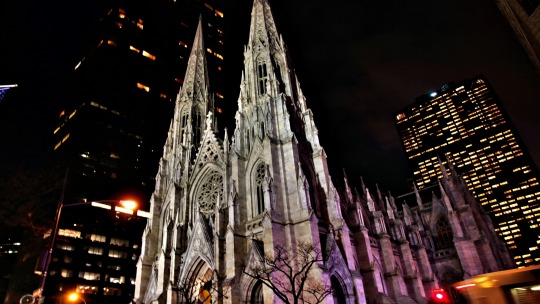
Christmas in New York is a one-of-a-kind experience. ✩‧₊˚🎁✩‧₊˚
#And someday we'll look back and say it was fun#happy holidays#rockefeller center#seasons greetings#radio city music hall#christmas lights#saks fifth avenue#architecture#st. patrick's cathedral#manhattan#new york city#skyscrapers#new york
3 notes
·
View notes
Text
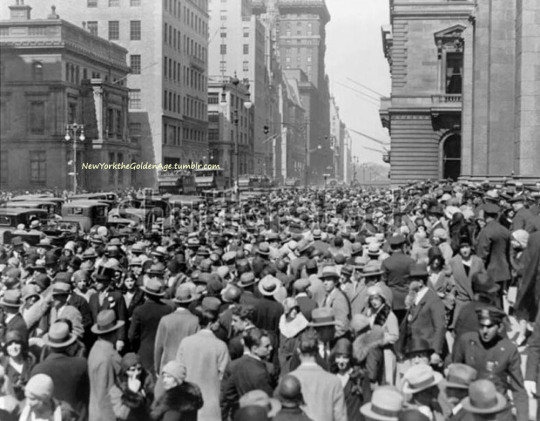
Churchgoers and parade spectators crowd the steps of St. Patrick's Cathedral and the sidewalks of Fifth Avenue on Easter Sunday, ca. 1925.
Photo: Everett/Fine Art America
#vintage New York#1920s#Easter Sunday#Easter Parade#crowds#St. Patrick's Cathedral#Fifth Ave.#5th Ave.#vintage NYC
50 notes
·
View notes
Text
"When therefore you shall see the abomination of desolation, which was spoken of by Daniel the prophet, standing in the holy place: he that readeth let him understand." St.Matthew 24:15
0 notes
Photo

NYC 2016: St. Patrick’s
Please leave captions & credits intact and don’t reblog to NSFW/18+ blogs.
126 notes
·
View notes
Text

1 note
·
View note
Photo
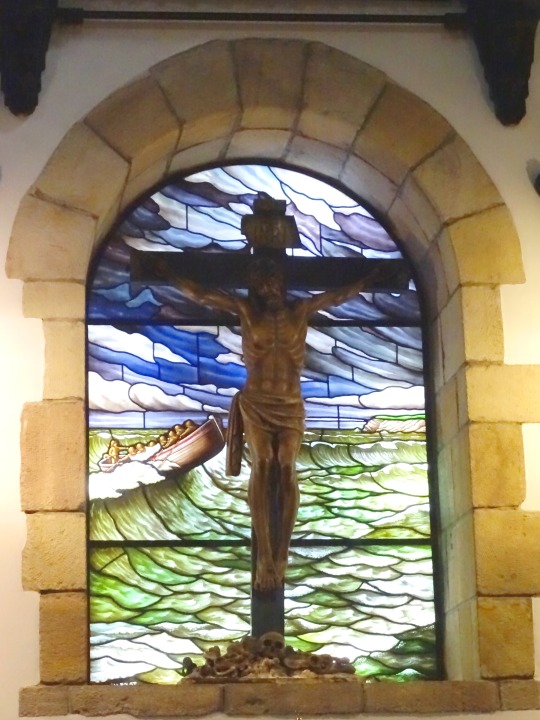

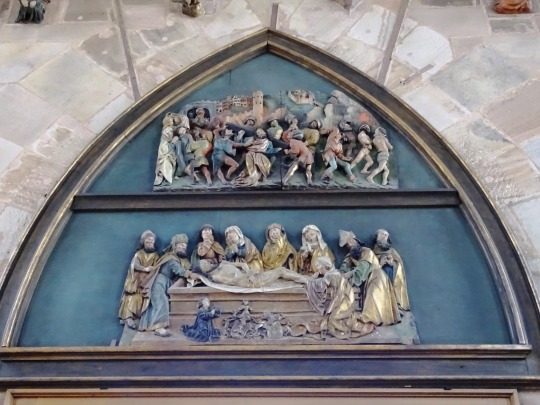
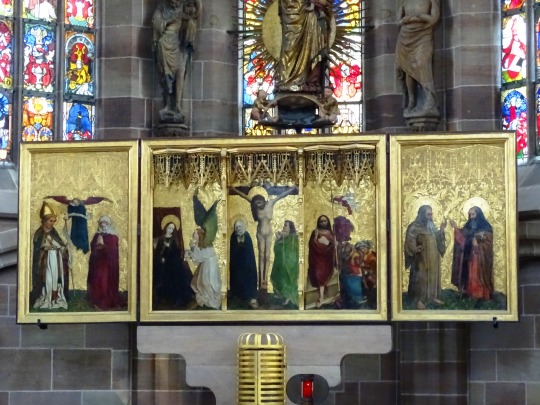






Good Friday
Good Friday commemorates the death of Jesus on Calvary, the site just outside the walls of Jerusalem where Jesus was crucified. It falls on the Friday before Easter, for 2023, that’s April 7. Most Christian denominations recognize Good Friday as a holy day, with many, including members of Catholic, Eastern Orthodox, and Lutheran faiths, fasting and attending church services. But there is so much more to this holiday than just these religious rituals. Good Friday is, for many, an intensely personal day of prayer and devotion. Let’s take a closer look.
History of Good Friday
The crucifixion of Jesus Christ at the site of Calvary is commemorated on Good Friday — a Christian religious holiday. Taking place during Holy Week, the holiday is considered part of the Paschal Triduum on the Friday before Easter Sunday. The day is also widely known as Great Friday, Black Friday, or Holy Friday. Around the world, Good Friday is a national holiday in many countries, especially in the Catholic and Anglican nations. Fasting is the traditional way to observe this solemn day, followed by somber processions.
The exact origins of Good Friday are unknown, but the celebration dates back to the 4th century. Fasting and putting limitations on oneself to mourn the death of Jesus is an ancient practice. Why the holiday is called Good Friday is also unknown, but there are several theories. Some believe that ‘God’s Friday’ evolved to ‘Good Friday,’ while religious devouts firmly believe that the day is named ‘good’ as a symbol of Jesus and everything he stood for against evil-doers. It is also widely believed that Jesus died on a Friday, but this doesn’t explain the addition of ‘good’ to the holiday.
Jesus sacrificed his life out of love for his believers and all mankind. His death was the ultimate sacrifice. Despite it being a terrible day in history, the event paved the way for mankind’s salvation, with Jesus being resurrected two days later.
Good Friday timeline
4 B.C. Birth of Jesus
Historians generally agree the birth of Jesus happened in Bethlehem between 6 B.C. and 4 B.C.
27 A.D. The Transfiguration of Jesus
After heading to a high mountain to pray, Jesus' face begins shining, then his entire body glows with a white light.
29 A.D. John Baptizes Jesus
Jesus begins his own ministry shortly after his baptism by John the Baptist.
33 A.D. Crucifixion
Jesus is hanged on the cross between two thieves for six hours before dying.
Good Friday FAQs
Why do we call it Good Friday?
“That terrible Friday has been called Good Friday because it led to the Resurrection of Jesus and his victory over death and sin and the celebration of Easter, the very pinnacle of Christian celebrations,” according to the “Huffington Post.”
What happened on Good Friday?
Many Christians around the world observe Good Friday on the Friday before Easter Sunday. It commemorates Jesus Christ’s Passion, crucifixion, and death, which is told in the Christian Bible. It is the day after Maundy Thursday. Good Friday commemorates Jesus’ death on the cross.
Why do we call it Easter?
The naming of the celebration as “Easter” seems to go back to the name of a pre-Christian goddess in England, Eostre, who was celebrated at beginning of spring.
How to Observe Good Friday
Pray
Fast
Volunteer
Many Christian churches hold prayer services during the hours of Christ's crucifixion. Many religious people observe a period of prayerful silence during this time, especially between the hours of noon and 3 P.M.
Depending on your Christian denomination, it may be appropriate to fast on Good Friday. It is a traditional day of fasting within the Catholic Church, for example.
Jesus stressed the need to help those less fortunate than ourselves. If your religious beliefs allow it, consider volunteering at your church or in your community on this day in the spirit of giving back.
5 Good Friday Oddities
The name "Good Friday" goes back centuries
Go fly a kite
Darkness
Lucky cross buns
Grab the scissors!
The earliest known use of the name "Good Friday" goes back to about 1290 in a text called "The South English Legendary."
In Bermuda, it's traditional to fly a kite on Good Friday, symbolizing both the cross and Jesus rising to heaven.
According to Christian tradition, when Jesus was crucified, there was darkness across the land and an earthquake.
It is tradition to eat hot sweet cross buns on Good Friday, and it supposedly brings good luck.
A widespread superstition is that getting a haircut on Good Friday prevents headaches for the rest of the year.
Why Good Friday is Important
It's a holy day
We're reminded of Jesus' sacrifice
Historical Jesus
Jesus was forced to carry his cross to Calvary, where he was crucified alongside two criminals. He remained alive on the cross for up to six hours. According to biblical tradition, from noon to 3 P.M. on that day, the sky grew dark.
Christian doctrine teaches that Jesus was born to a virgin, Mary. As an adult, he became a preacher, performing miracles, and then was put to death by authorities. This sacrifice allowed for the forgiving or pardoning of Christians' sins.
Just about every scholar of antiquity believes that Jesus was a historical figure. New Testament expert Bart Ehrman writes that "(Jesus) certainly existed, as virtually every competent scholar of antiquity, Christian or non-Christian, agrees."
Source
#Iglesia de San Cristóbal#Comillas#stained glass window#Spain#Sweden#Church of Old Uppsala#Frauenkirche#Nürnberg#Nuremberg#Bavaria#travel#St. Patrick's Cathedral#New York City#Notre-Dame Basilica#Montréal#Santa Fe#Strasbourg#France#Strasbourg Cathedral#7 April 2023#USA#vacation#original photography#architecture#tourist attraction#GoodFriday#Good Friday#Friday before Easter Sunday#2 days before Easter#Karfreitag
15 notes
·
View notes
